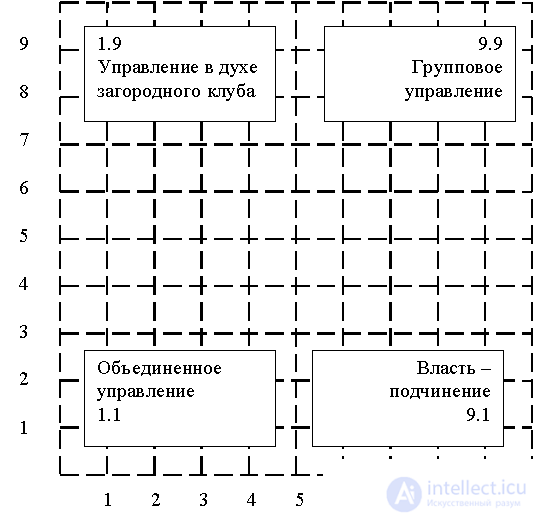Lecture
A strong manager must be a strong leader. A manager who does not have leadership skills is like a lifeguard who is afraid of water, it does not matter if there is a stock of knowledge if he cannot be used.
A survey of 1,500 managers * of European companies conducted in 1988 showed that the most important leadership qualities include the ability to form an effective team (96%), listen to colleagues and subordinates (93%), make decisions (87%) and engage others in their implementation (86%). The most extensive and generally recognized allocation of leadership styles was obtained by the system developed by the American industrial psychologist Rensins Likert. He singled out four leadership styles:
Exploiting authoritarian style * . Managers of this style impose their decisions on subordinates, motivation * is carried out by means of threats, the highest levels of management bear a great responsibility, while the lower ones practically do not bear it, lack of communication skills. Managers of this style emanate their MacGregor’s “X” theory.
Benevolently authoritarian style. Manager * refers to subordinates, in contrast to the first case, already condescendingly, in a fatherly way. Motivation * is already on the basis of remuneration. Management personnel * have a certain responsibility, but this applies mainly to the middle level. This style is also characterized by low sociability and limited group work.
Democratic advisory style. Managers of this style consult with subordinates and seek to use constructively the best that they offer. Motivation is already not only due to remuneration, but also in the form of some kind of connection to management. Most managerial personnel feel responsible for achieving the goals of the organization. Communication is carried out both from top to bottom and bottom to top. There are average group work opportunities.
Democratic style * , or group participation system. The basis is the involvement of subordinates both in defining the goals of the organization or division, and in monitoring their achievement. Managers completely trust subordinates. Motivation - at the expense of economic reward based on the goals of the organization. The staff at all levels feel real responsibility for the goals of the organization; There are many communication links and great group work opportunities. Managers of this style are based on MacGregor’s “U” theory.
Organizations where this style dominates are characterized by a high degree of decentralization, active participation of employees in decision making. Likert and several other scientists believed that such a system is ideal for profit-oriented organizations. However, Likert conclusions do not apply to all situations * . In some cases, under the leadership of an autocratic manager, more work is accomplished than under a Democrat. But you have to pay for this with less original solutions, low enthusiasm, heightened aggressiveness of people towards each other and towards the leader, and at the same time more dependent and submissive behavior.
In addition to the style of leadership, balancing between democracy and the aristocracy, there are also styles that focus on the conditions or results of work or on people, a favorable climate in the team.
A similar classification was proposed by Robert Blake and Jane Mouton of the University of Texas. They presented it in the form of a management grid or lattice, which includes 5 basic leadership styles (Fig. 6.11). The grid is a table 9  9 positions. Vertical reflects 9 degrees of "caring for a person", and horizontally 9 degrees of "caring for production." The grid can be used in parallel with psychological tests about the pros and cons of managers.
9 positions. Vertical reflects 9 degrees of "caring for a person", and horizontally 9 degrees of "caring for production." The grid can be used in parallel with psychological tests about the pros and cons of managers.

Fig. 6. 11. Management net of R. Blake and A. Muton
The first management style 1.1. - fear of poverty. The application of minimal effort on the part of the manager, both to save the team and to organize and improve production. Only efforts are made to avoid dismissal.
Management style 1.9 is called "country club style management". The manager focuses on good human relations, but cares little about the development of production.
The management style 9.1, called "power-submission", is characterized by a high level of care for production and a low level of care for people. Sometimes it is also called "task management". With the management style 5.5 - "organizational management" - the manager equally distributes his attention between the development of production and the formation of good relations in the team, but at the same time no one uses his full potential.
And finally, 9.9 - the style of "group management", which is based on the intensive attention of the manager at the same time to subordinates and production. A team is created where people consciously attach themselves to the goals of the organization. High morale and high production efficiency are ensured.
Blake-Mouton’s management grid is not the only approach to this problem. So, for example, there is a three-dimensional Reddin table, which expands the two-dimensional Blake-Mouton grid by adding a third factor - efficiency. Based on the modern situational theory, models of Fred Fiedler, Terence Mitchell and Robert House, Paul Hersey and Kenneth Blanchard, Victor Vrum and Philip Higton were built.
In order for a manager to work efficiently, he must use different leadership styles depending on the specific situation. Chris Argyris noted that the best leadership style * is "adaptive" or "reality-oriented."
Comments
To leave a comment
Management
Terms: Management